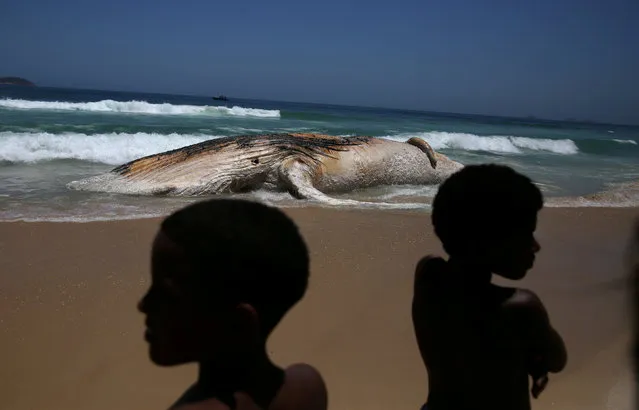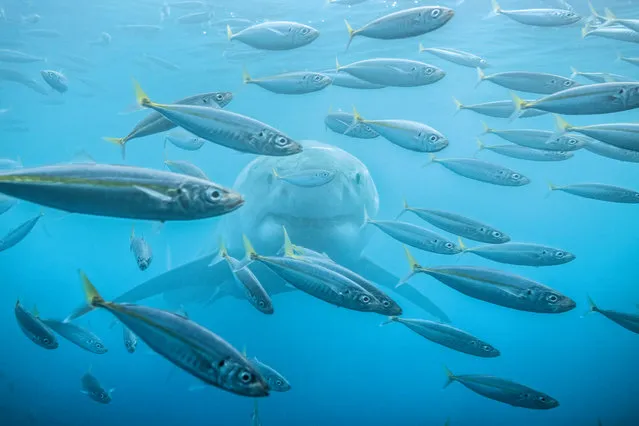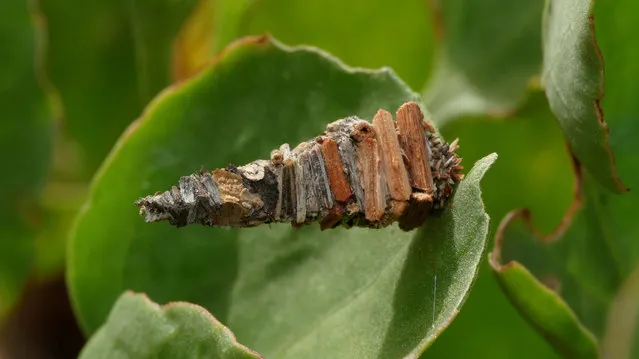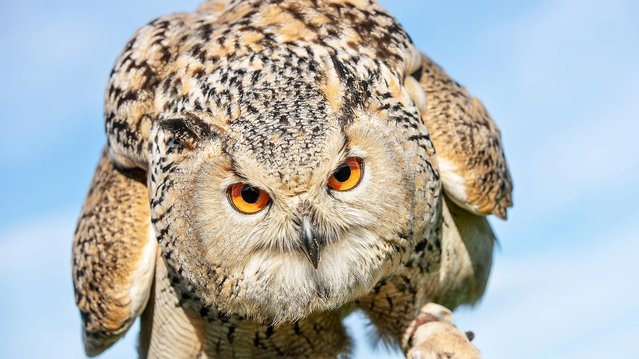
A dead whale is seen on the shore of the Ipanema beach in Rio de Janeiro, Brazil November 15, 2017. A biologist, Rafael Carvalho, said on Wednesday the whale appeared to have been dead for a few days. Authorities were urging beachgoers who had flocked to Ipanema on a national holiday to stay away from the animal. However, many were spotted near the carcass with some people playing in the water nearby. The whale is approximately 39 feet (12 metres) long and weighs about 25 tonnes. (Photo by Pilar Olivares/Reuters)
16 Nov 2017 08:35:00,post received
0 comments







